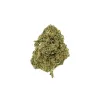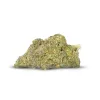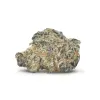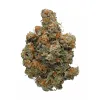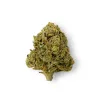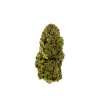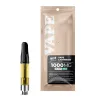If you consider yourself knowledgeable on cannabis, or run in stoner circles, you’ve probably already heard the terms “indica,” “sativa,” and “hybrid” thrown around. These are the three main types of strains for weed, and they each have their own sets of effects and properties.
If you’re new to the cannabis game, you may feel a little lost right now. You may wonder why some strains affect you different than others, when they seem to have relatively similar THC contents. After all, it’s just weed right?
That’s right! But there’s also a lot more to using cannabis than cannabinoid contents. In fact, one of the most important aspects of using the plant, whether medicinally or recreationally, is choosing the right strain for your desired effects. Keep reading to find out the differences between indica, sativa, and hybrid strains and which one is best for you!
Sativa vs. Indica Chart
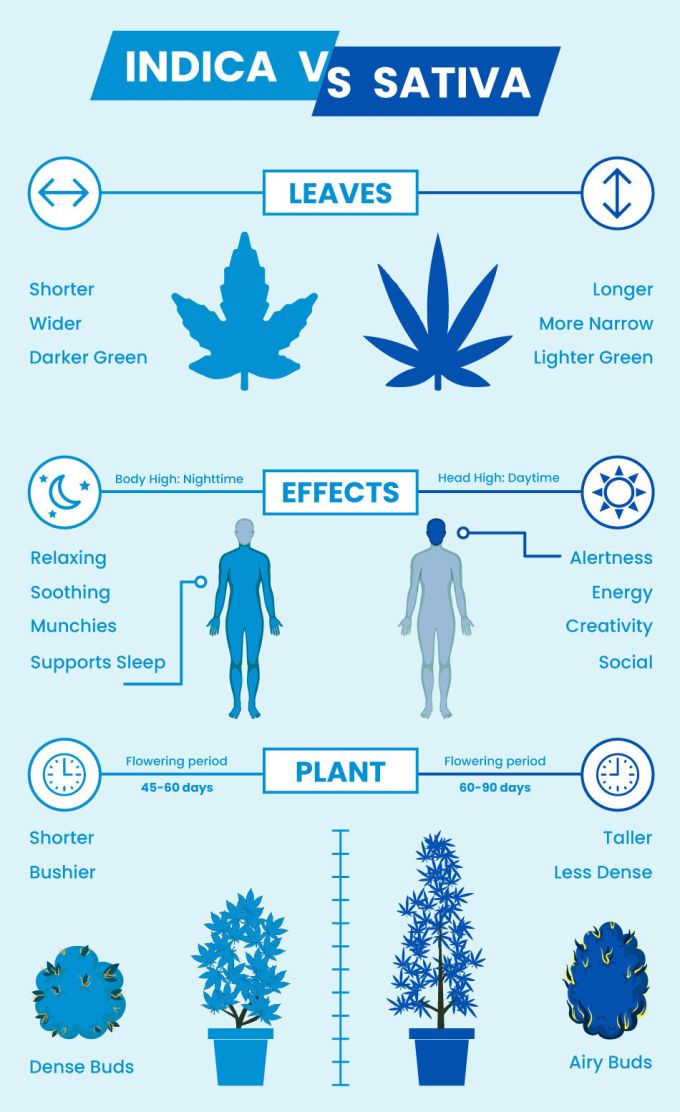
Sativa Explained
Sativa strains are native to East Asia but are now often grown in similarly hot and dry climates like Africa, Central America, and West Asia. These strains come from the Cannabis sativa plant and are often characterized by their tall and thin frames. They have long, finger-like leaves and often grow over 12 feet tall. They also take longer to mature than other types of cannabis.
Sativa plants often contain lower doses of CBD and higher doses of THC, so strains from these types of cannabis are best for those looking for a cerebral “head” high. It has the capability to be energizing, focusing, creative, and anxiety-reducing, making them perfect for daytime use, or even a wake-n-bake.
Some of the most popular sativa strains include Durban Poison, Sour Diesel, Strawberry Cough, and Green Crack. When using these strains, you’ll come up with bright and creative ideas, take on time-consuming tasks, and most importantly, you’ll have enough energy to actually put your plants in motion.
Indica Explained
Cannabis indica plants are indigenous to Afghanistan, Pakistan, India, and Turkey, but much like its sister, indica strains are now grown all around the world. As they have adapted to the harsh weather conditions of the Hindu Kush mountains, these strains thrive in dry and tumultuous climates. They’re often characterized as short and bushy with wide, broad, and chunky leaves. Indica grows faster than sativa and produces more buds per plant.
Indica strains often contain higher CBD levels than sativa strains, but that doesn’t necessarily mean that they contain less THC. Because these strains are higher in CBD, they offer relaxing, pain-relieving, and appetite-stimulating properties. Since they’re sedating, they’re best used at nighttime after a long day of work (or during the day on a lazy day off).
Some popular indica strains include Northern Lights, Wedding Cake, Girl Scout Cookies, and Grandaddy Purp. When using these strains, you’ll feel full-body relaxation that’ll leave you stress-free and winded down before lulling you into a deep and restful slumber.
Hybrids Explained
As their name may suggest, hybrid strains are created from a combination of two strains. They are commonly grown in farms or greenhouses from two or more cultivars. There are four main types of hybrid strains:
|
Type of Hybrid Strain |
What Are They? |
|---|---|
|
Sativa x Sativa |
Two different sativa strains are bred together. |
|
Sativa x Indica |
A hybrid strain with sativa-dominant characteristics but equipped with the properties of both. |
|
Indica x Sativa |
A hybrid strain with indica-dominant characteristics but equipped with the properties of both. |
|
Indica x Indica |
Two different indica strains are bred together. |
Breeding different cannabis hybrids involves the same process used for all other types of plants. A female plant is pollinated with male pollen, both of which are carefully and specifically picked for their properties and characteristics, by selective breeders in a controlled environment.
The effects of hybrids are much more difficult to pinpoint than any indica or sativa strains because they are much more diverse and much less uniform. The properties you get from a hybrid strain will depend on the parent strains used to create it. If you choose an indica-dominant hybrid mixed with a sativa, for example, you’ll mainly get indica’s effects with some sativa-like properties sprinkled throughout. The same is true for the opposite. Depending on dominant genes, your hybrids could greatly vary in effect.
Popular hybrid strains include OG Kush, Cherry Pie, Blue Dream, Gorilla Glue, and Pineapple Express. Because the properties of hybrid strains are more broad than specific, it’s recommended that you search out information revealing the effects and benefits of each parent strain, as well as which one is the dominant of the pair.
Sativa vs. Indica: The Effects
Sativa and indica clearly have their own independent sets of benefits and effects. Not only do these differences make for two totally distinct psychoactive and physiological experiences, but which one you prefer can be a matter of how you’re feeling in the specific moment you’re looking to use cannabis. On days when you need an extra boost at work or at home, you might benefit more from sativa, but on days where you need a little help sleeping or relaxing, indica may be the right call.
Let’s dive a little deeper into how indica and sativa compare to each other.
Sativa vs. Indica: The High
Sativas are known for their cerebral high. These are the type of strain to choose if you want to laugh with friends and goof off. In addition to putting you in a pensive state, sativa strains can also assist you in concentrating on feelings and thoughts that were previously not so prevalent in your mind. They are typically invigorating and energizing, helping you thrive in social and task-related scenarios by promoting comfort and focus. With a happy-go-lucky attitude, you'll feel talkative, active, and ready to take on anything.
Indica strains, on the other hand, are more about the body high than a cerebral twang. They’ll have you feeling sedated and sleepy, but you’ll also experience a deep relaxation accompanied by a soothing numbness. This is the way to go when it comes to chill nights in when you’re free to sit around and watch TV for hours. These strains will also make you really hungry, so be sure to grab a takeout menu and go on a little grocery trip before you partake. And by “grocery trip,” we mean get some chips and ready-made food, because you definitely won't have the energy to chop vegetables or operate a stove!
So, to summarize, indica will make you feel:
- Calm
- Pain relief
- Sleepy
- Relaxed
- Mellow
- Hungry
While sativa will have you feeling:
- Euphoria
- Energetic
- Alert
- Creative
- Cheerful
- Focused
Sativa vs. Indica for Pain Relief
While both strains have their own incredible sets of effects, indica strains are best for pain relief. Because indica has higher CBD contents than sativa, strains of this type are usually more effective at treating or soothing bodily pains. Not only does the CBD help with pain management, but indica strains also make you feel sedated and ready for bed, which is especially helpful if you have any sort of ailment that’s keeping you up at night.
In fact, a study published to the Journal of Alternative and Complementary Medicine in 2014 found that users prefer indica strains when it comes to pain relief, sedation, and sleep, while they prefer sativa to improve energy and mood. Indica strains have been used to treat relief from chronic or acute pain, and even by users who suffer from diseases like arthritis.
Sativa vs. Indica Edibles
Common cannabis sense tells us that infusing edibles with sativa strains will provide energy and creativity, while infusing them with indica will result in a powerfully relaxing experience. But there’s much more to cannabis than just the strain you choose. How you consume it makes a difference as well.
Taking edibles isn't like smoking or vaping because their effects take longer to kick in and last longer to wear off than other ingestion methods. When you take edibles, they need to be digested before reaching the bloodstream. This process involves your stomach breaking down and separating each individual compound in your edible product, including the THC. The THC is then transported to your liver, where it is metabolized as 11-hydroxy-THC. This metabolite is much stronger than THC and produces more intense and longer lasting effects.
All in all, cannabis edibles, whether made from indica or sativa strains, are the best option if you’re looking for intensity and longevity. They may take up to a couple of hours to kick in, but once they do, they’ll leave you feeling potent effects for upwards of eight hours!
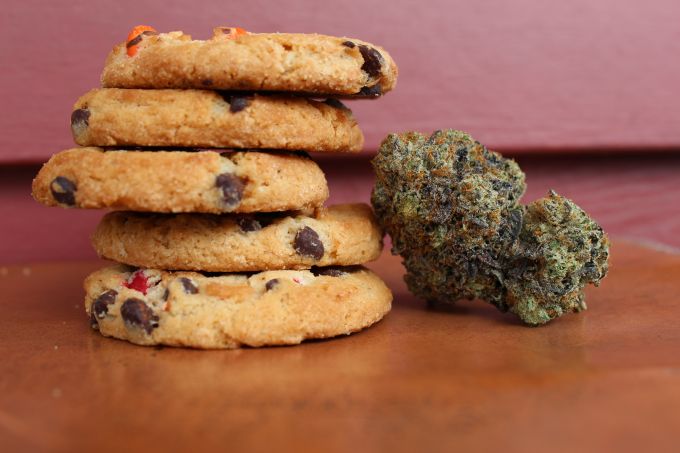
Cannabis Ruderalis Explained
Although indica, sativa, and hybrid strains are by far the most popular when it comes to cannabis, there is another, lesser-known strain to know about: Cannabis ruderalis. This cannabis plant is native to Asia, Central and Eastern Europe, and most abundantly, Russia. Many cannabis connoisseurs believe ruderalis to be a descendant of indica strains that adapted to the harsher climates and shorter growing seasons of its native environment. These plants have escaped human cultivation and adapted to natural environments on their own.
They’re known to be between one to two and a half feet tall and have thick, sturdy stems. Their most desirable aspect is that they automatically flower with no external care. Because of its untouched genetic lineage, ruderalis strains tend to have a naturally low THC concentration, but their stability and independence makes them attractive to breeders looking to benefit from its autoflowering properties. When crossed with other cannabis types, ruderalis allows breeders to combine its low-maintenance traits with the advanced potencies and flavors of tamed strains.
Strains made with this type of cannabis are easily recognizable because they often contain the words “automatic” or “autoflowering” in their names. These include Northern Lights Automatic, Royal Gorilla Automatic, and Membrana Hiper Autoflowering. Although not known for any particular effects or flavors, crossing ruderalis with others creates hybrid strains that automatically switch from vegetative growth to the flowering phase, making ruderalis attractive for breeders.
Cannabis Strains to Consider for Certain Conditions & Effects
Cannabis strains are all different, even those that belong to the same strain type. One type of indica may be able to help with pain, while another may be best for sleep. The same goes for sativa and hybrid strains and their respective traits and effects.
Though this may make matters trickier when it comes to choosing the perfect strain for you, it also allows for a more personal and specific choice. Below are a few cannabis strains and what conditions they can help with:
|
Strain Name |
Strain Type |
CBD Content |
THC Content |
Helps With |
|---|---|---|---|---|
|
Acapulco Gold |
Sativa |
0.1% |
15-23% |
Stress, nausea, pain |
|
Blue Dream |
Hybrid |
<1% |
30% |
Pain, inflammation, insomnia, mental fog |
|
Granddaddy Purple |
Indica |
6% |
17-23% |
Lack of appetite, insomnia |
|
Maui Wowie |
Sativa |
0.55% |
13-19% |
Fatigue, depression |
|
Sherbet |
Hybrid |
<1% |
18% |
Happiness, creativity, relaxation |
|
Northern Lights |
Indica |
0.1% |
16% |
Pain, mood, insomnia, lack of appetite |
|
Green Crack |
Sativa |
<1% |
17% |
Energy, stress, euphoria |
|
Pineapple Express |
Hybrid |
<0.1% |
23% |
Mental fog, pain, socializing |
|
Purple Punch |
Indica |
<1% |
19% |
Relaxation, stress, energy |
How to Choose the Perfect Strain
Although you’re certainly much more knowledgeable on indica, sativa, and hybrid strains than you were when you first started reading this article, understanding each type of strain is just the beginning of choosing the right strain. Here’s a couple other things to look out for.
Tolerance
Which strain will be the best fit for you and your needs depends on how tolerable you are to THC. For example, although Godfather OG has full-body euphoric effects, if you're a beginner, intermediate, or even a seasoned stoner, the strain may not be suitable for you due to its high THC level. While some strains may seem to check all your boxes when it comes to effect and feel, you need to be sure to check their cannabinoid content to make sure you can handle it well enough to actually have a good time. When you consume too much THC, you may feel on edge—or even go over the edge—instead of relaxing.
Understanding the effects and properties of each strain is critical but choosing a strain with a realistic and manageable THC level is equally important.
Dosage
In the same vein, dosage is an important component of a fun and positive THC experience. Overdosing on THC is not fatal, but it can cause uncomfortable and sometimes harmful effects, including:
- Confusion
- Cottonmouth
- Dry eyes
- Problems with concentration
- Slowed reaction times
- Fatigue
- Headaches
- Dizziness
- Increased heart rate
- Anxiety
- Paranoia
- Panic
We don't want you to become lethargic on your couch or panic in public, so we recommend starting slow and gradually increasing your dosage to a level that works for you. Starting low and working your way up to the perfect high is always best, but here's a chart to help you figure out how to dose:
|
Dose |
Amount of THC |
|---|---|
|
Low Dose |
1-2.5mg |
|
Moderate Dose |
2.5-15mg |
|
High Dose |
30-50mg |
|
Very High Dose |
50-100mg |
Body Chemistry
We all have different weights, metabolism rates, and tolerances, so while your friends may stop after a few hits, you may still feel ready to keep going (or vice versa). Every body is different, not only in appearance, but also in chemistry. Remember, what works for others may not work for you.
There are many bodily systems that are affected by marijuana, but the primary one is your Endocannabinoid System, which is a communications system in your brain and body that affects how you feel, move, and react. Endocannabinoids, receptors, and enzymes are linked together to affect body functions through the endocannabinoid system. We know from the little research we have conducted that the system influences hunger, weight loss, memory, learning, and healing, despite the fact that it was only discovered a few decades ago.
It is your responsibility as a consumer to make sure you understand how external cannabinoids will affect your body, which leads us to our next point.
Desired Effect/Mood/Experience
An attractive feature of strains is that you can find out all you need to know about them by doing a quick Google search. That way, you can find out what sort of strains they are, what effects they produce, and how much THC they contain. Choosing the right strain depends on how you want to feel, what effects you want to achieve, and what sort of experience you want to have when consuming cannabis.
For a low-key, relaxing, and sedating experience, go for indica. For an energizing, focused, and energetic effect, choose sativa. For a little bit of both, pick a hybrid.
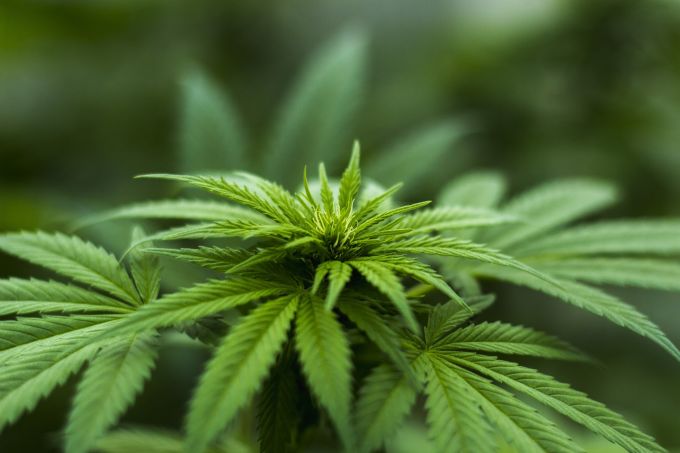
Understanding Cannabinoids & Terpenes in Cannabis
When it comes to picking strains, type, body chemistry, and effects are all important factors, but those aren't the only ones. Under the surface of the cannabis plant, you will find a number of wonderous and interesting compounds, but two of the most important are cannabinoids and terpenes. So, what are they?
What Are Cannabinoids?
There are around 480 different compounds in cannabis, but only 100 of those are known as cannabinoids. They are classified as any of a group of closely related compounds that include the active constituents of cannabis. Despite CBD and THC being the most well-known, the plant contains many other cannabinoids as well. Seven subclasses are used to classify them:
- Cannabichromenes (CBC)
- Cannabidiol (CBD)
- Cannabigerols (CBG)
- Cannabinol (CBN)
- Cannabinodiol (CBDL)
- Tetrahydrocannabinol (THC)
- Other cannabinoids, including cannabicyclol (CBL), cannabielsoin (CBE), and cannabitriol (CBT)
Several types of cannabinoid receptors are involved in these compounds. The two main types are CB1 and CB2. The effects of these cannabinoids on the body depend on the brain area they affect; some affect memory, cognition, and psychomotor, while others affect reward, pleasure, and pain perception.
Cannabinoids are mainly differentiated based on their level of psychoactivity. CBG, CBC, and CBD, are not known to but psychoactive agents, but THC, CBN, and CBDL, as well as some others, have varying degrees of psychoactivity. Other, more popular, psychoactive compounds include delta 8, delta 9, and delta 10.
What Are Terpenes?
In addition to cannabis, terpenes are also found in other plants and some animals. They are naturally occurring chemical compounds made up of volatile unsaturated hydrocarbons found in the essential oils of plants. It is the terpenes that give plants their distinctive smell and taste. Apart from affecting the smell and flavor of cannabis strains, they may also influence the effects produced by certain strains.
Some of the most common terpenes include:
- Bisabolol
- Caryophyllene
- Linalool
- Myrcene
- Ocimene
- Pinene
- Terpinolene
- Limonene
- Humulene
- Eucalyptol
It is these terpenes that determine whether your strain smells sweet and fruity, or earthy and sour; it is what determines whether you will taste tangerine or blueberry on your exhale. Additionally, they can help cannabis relieve insomnia, inflammation, irritation, nausea, anxiety, and pain, among other ailments.
Understanding the Entourage Effect
The entourage effect may sound familiar if you've been using cannabis for a while. If you've never heard of it, or you were too high to understand what it is when it was first explained to you, we're here to explain it in more detail!
Aside from THC and CBD, our bodies also take in hundreds of compounds that have their own effects and benefits when ingesting cannabis. Essentially, the entourage effect states that cannabis works best when all of its compounds work together in synergy to enhance and influence each other.
Mood and anxiety disorders could potentially be treated effectively with terpenes and cannabinoids, according to a study published in the National Library of Medicine in 2020. This is a prime example of how cannabinoids and other compounds in the plant can work together to enhance each other and achieve better results. In other words, it’s a prime example of how the entourage effect works.
As a result of the entourage effect, all of cannabis' compounds interacting with each other, the user has the best possible cannabinoid experience. Without other compounds, such as terpenes, found in the miraculous plant, CBD or THC alone would not be as effective.

